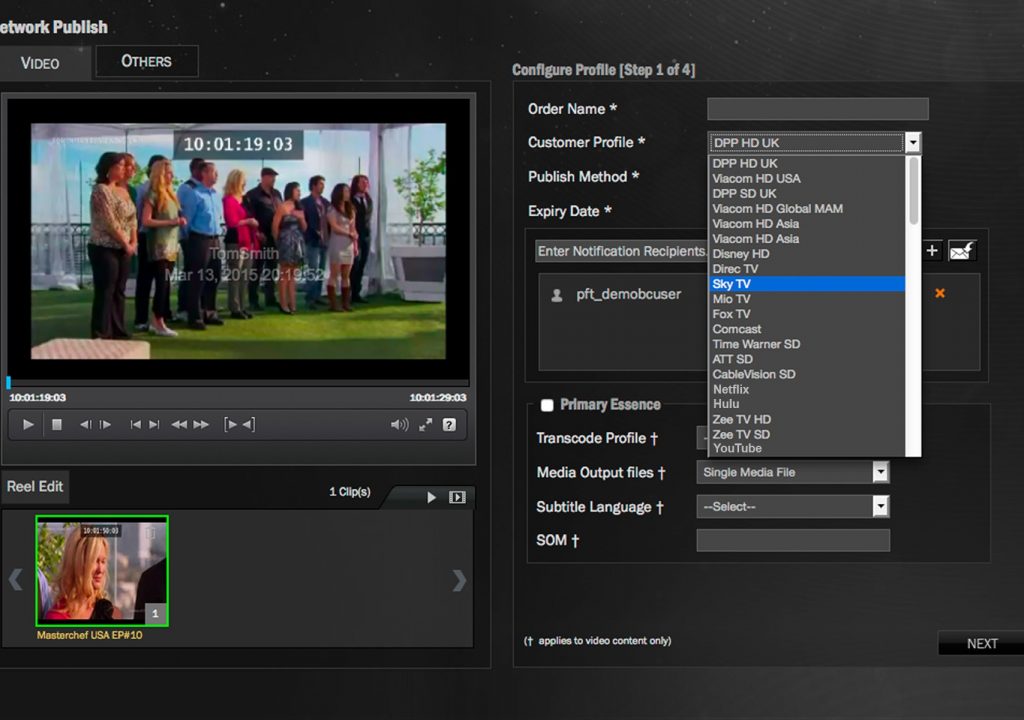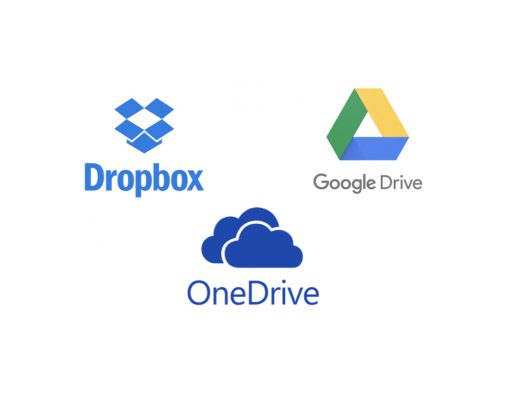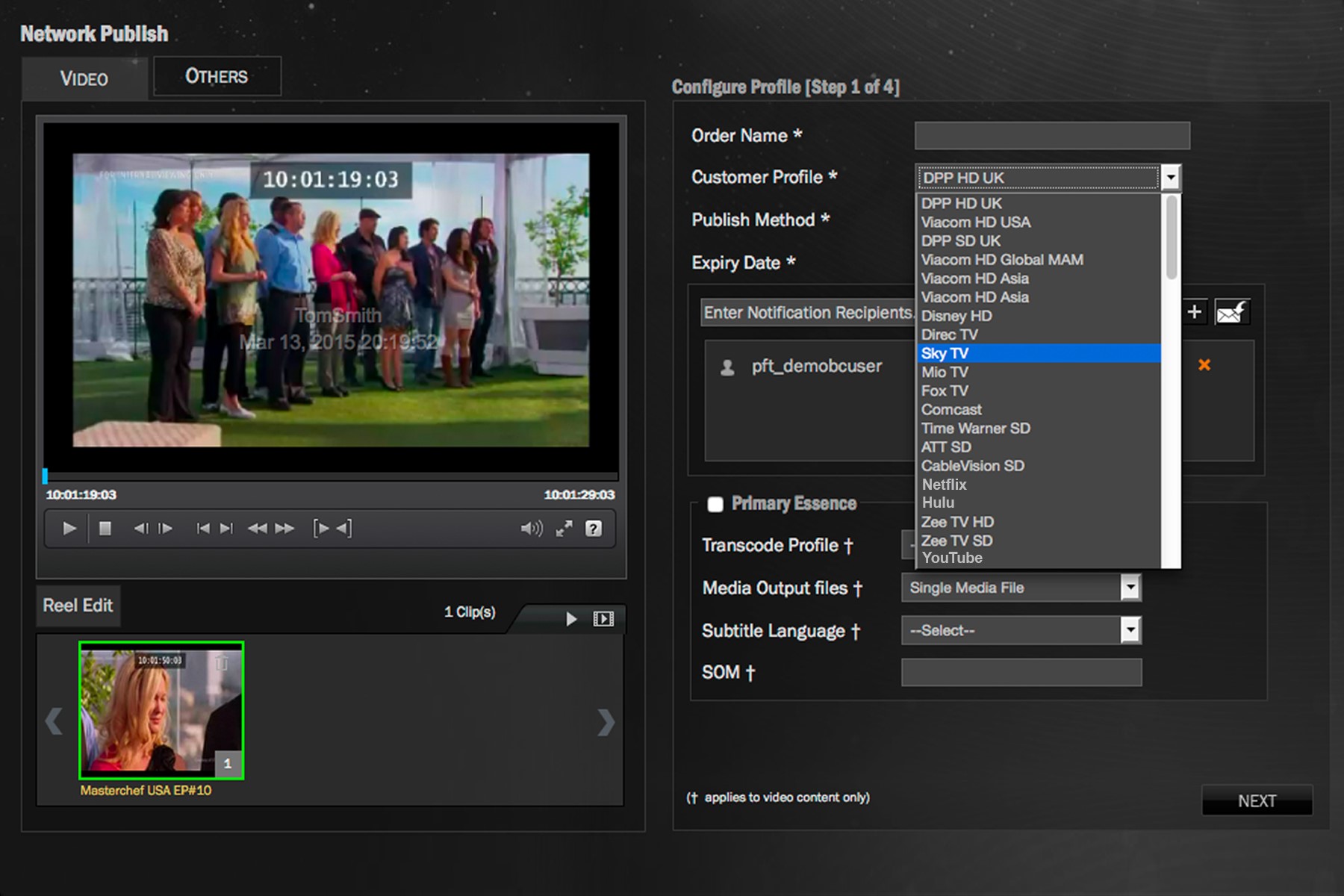
Media & entertainment projects will almost always boil down to four phases: pre-production, production, post-production and distribution. Production and post get most of the glory, but the distribution aspect of a project is becoming more and more essential. With platforms like YouTube and Netflix, the days of simple deliveries in single formats are long gone. That reality has opened up opportunities, but also created some challenges.
Prime Focus Technologies (PFT) recently secured iTunes Certification for direct content delivery, which got us thinking about how distribution is continuing to evolve. The announcement means PFT can serve as a “hub” for their clients, so that content can easily reach multiple platforms to make distribution that much more efficient and effective.
We wanted to learn more about how changes like these are affecting individuals and organizations, so we talked with Patrick Macdonald-King, President, North America for PFT. Patrick discusses how he’s seen the industry develop, what professionals struggle with the most, how individuals can approach change and plenty more.
ProVideo Coalition: Prime Focus Technologies received certification from Apple to deliver movie content and associated assets directly to iTunes. What does this mean in a practical sense?
Patrick Macdonald-King: What it does is provides us with the ability to service content direct to Apple, and Apple is pretty stringent around who they allow to do direct uploads. For us, it widened our scope in terms of what we could offer as well as extended our credibility in the marketplace. It also allowed our existing customer base to tap into these services. iTunes as a whole has become an industry mezzanine file for VOD, and a lot of these other services will accept the iTunes format. Because of that, having certification is a real feather in the cap.
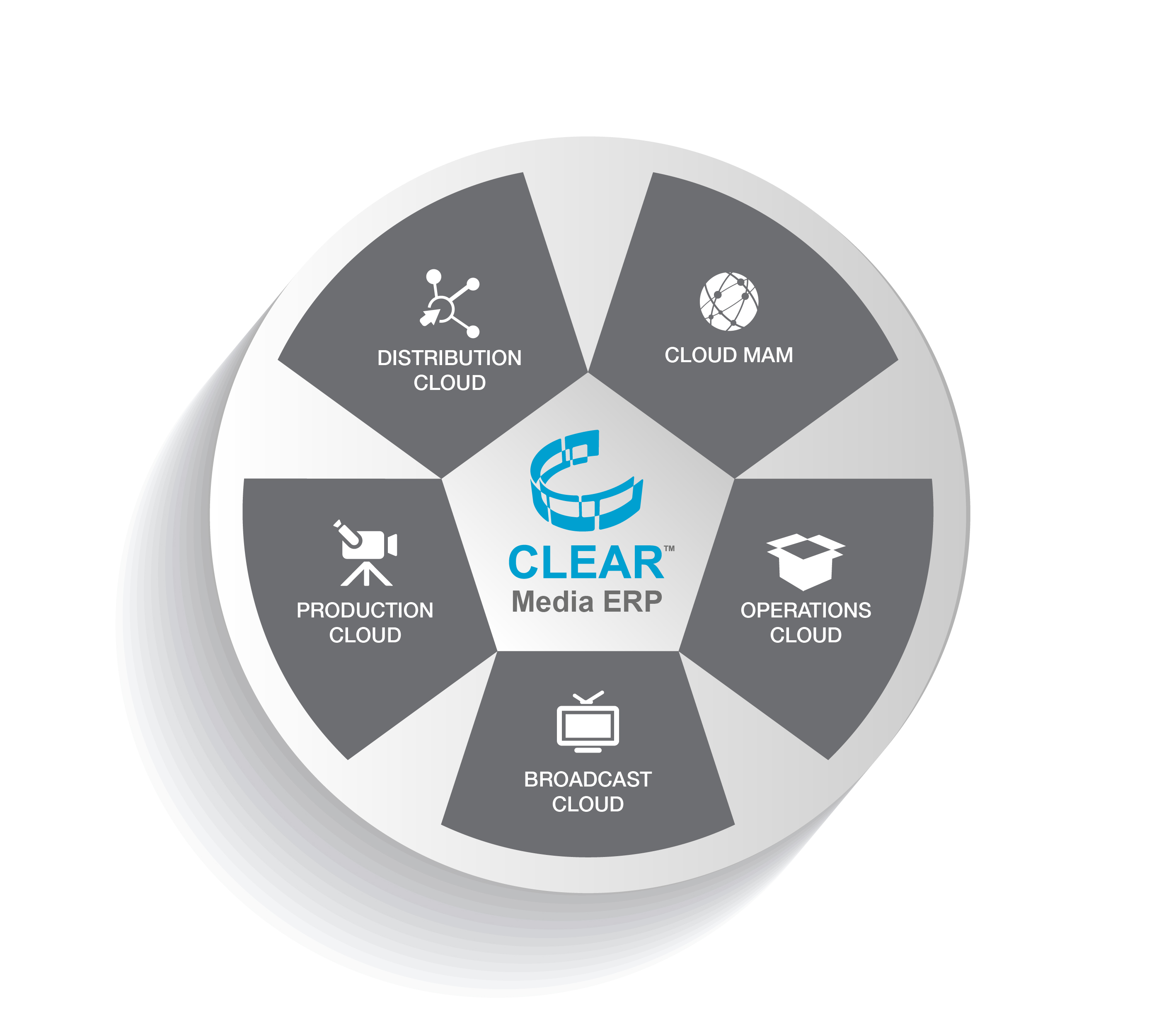 A lot of it is about simplification, but it’s also about being able to go to the same provider. You don’t want to go to one provider for iTunes, one for Netflix, one for Amazon, etc. It’s a lot easier to deliver a master and have a number of destinations from a single provider, and our overall goal is to automate these processes. Not everything will be able to be automated, but the idea is that you’ll be able to log into our system, select an asset for distribution, and package it up by utilizing automation wherever and whenever possible. We have a specific module in our product called CLEAR Operations Cloud. It helps package and deliver assets at a click of a button ensuring all the associated assets, like closed captioning, metadata and marketing assets, are included as one bundle!
A lot of it is about simplification, but it’s also about being able to go to the same provider. You don’t want to go to one provider for iTunes, one for Netflix, one for Amazon, etc. It’s a lot easier to deliver a master and have a number of destinations from a single provider, and our overall goal is to automate these processes. Not everything will be able to be automated, but the idea is that you’ll be able to log into our system, select an asset for distribution, and package it up by utilizing automation wherever and whenever possible. We have a specific module in our product called CLEAR Operations Cloud. It helps package and deliver assets at a click of a button ensuring all the associated assets, like closed captioning, metadata and marketing assets, are included as one bundle!
So we’re simplifying what can be a cumbersome delivery phase of a project?
Yes, but it all depends on what you want to do.
I’m working on a project right now that’s a bit different, and the company doesn’t have the high-end destination like iTunes or Netflix, but they’re looking at short news clips that need to be pushed out to different sites, all with different requirements. And much of that can be automatized, which opens up a lot of opportunity in the marketplace.
There’s so much content being published to the Internet everyday. Streamlining that process with automation is what we’re trying to do.
Viewers wanting and needing content at their fingertips was quoted in the press release as a major motivating factor. Do you think that kind of demand from consumers represents the biggest change we’ve seen in terms of distribution?
Absolutely. There are a number of quantum shifts that are happening in the industry. The number of destinations in terms of OTT platforms and VOD is growing by the day.
You’ve got two aspects of it, and they’re very different things. You have the delivery mechanism themselves, which is something like an HBO GO type of application, but you also have the processing in-between that is sort of the engine behind the delivery. That’s a lot of where we play.
The proliferation of different distribution channels across the Internet, the demand for people to get their content out there quickly has really changed the way audiences consume content. A perfect example is what we saw at the recent Olympics. More people were focused on going online and looking for short clips and updates during the Olympics than they were in tuning into NBC. It’s a sea change in terms of the way people are consuming information and content. By giving people the ability to access what they want, when they want and where they want, we’ve seen a real paradigm shift.
Granted, television will never die, and live sports will ensure that. The television itself is a central aspect of many homes in a real, physical manner, but that’s going to change and it is changing.
What are some of the biggest differences in the industry today and when you founded DAX, now part of PFT?
That’s a long conversation!
For the DAX business itself, we sort of struggled along for a number of years and were most focused on production dailies and review and approval of cuts and proxies. That whole business started up because of tax incentives around the world, so many of these large companies were now producing content in various countries and they didn’t want to wait for 48 hours for FedEx to deliver a hard drive. That evolved into a whole production asset management world, which was essentially a virtual production office.
The big change came when the iPad came out though. It was the last mile in terms of the elimination of the DVD. That allowed everything to become mobile. When that happened we saw a massive shift, as our revenue jumped over 40% in two consecutive years, just because we went mobile. It changed the mindset of people and how they wanted to consume video.
In some ways it was the same driver we see with OTT platforms. The tablets allowed creatives to view and access these production elements from the comfort of their couch, whenever they wanted.
We just finished up with pilot season, and just between April 1st and the end of May, we had 9,800 unique users log into the system, and of those users, over 20% were on a mobile device. That’s a huge jump from where it was just a couple years ago. And of that 20%, over 8% were accessing from an iPhone. People are looking at dailies, scripts, etc. all completely through their phone. That’s something that didn’t exist four or five years ago.
It’s incredible that so much of this has become such an important work tool for so many professionals. Mobile has completely changed our approach and expectations.
Do professionals struggle more with distribution technology or around needing to change their approach to it?
You’re always going to have people with legacy mindsets who have done something a certain way for years and don’t want to change. But the millennials and GenXers are basically the majority these days, and those groups are of a totally different mindset. They’re driven by convenience.
Across the board though, with everyone having and utilizing their own personal computers and phones, people are getting more technically savvy because of the training they’re getting through application like ours, but also through things like iTunes and YouTube. Files are getting larger and larger, and people want to do more and more, because the push is always going to be better, faster, cheaper. They want to use the technology to streamline their process, and they want to use the Internet to do most of that heavy lifting.
CLEAR Operations Cloud with over 400 preset robots really services these demands – it allows users to store their files in a central repository with the ability to package and delivery their assets to all their digital and linear destinations.
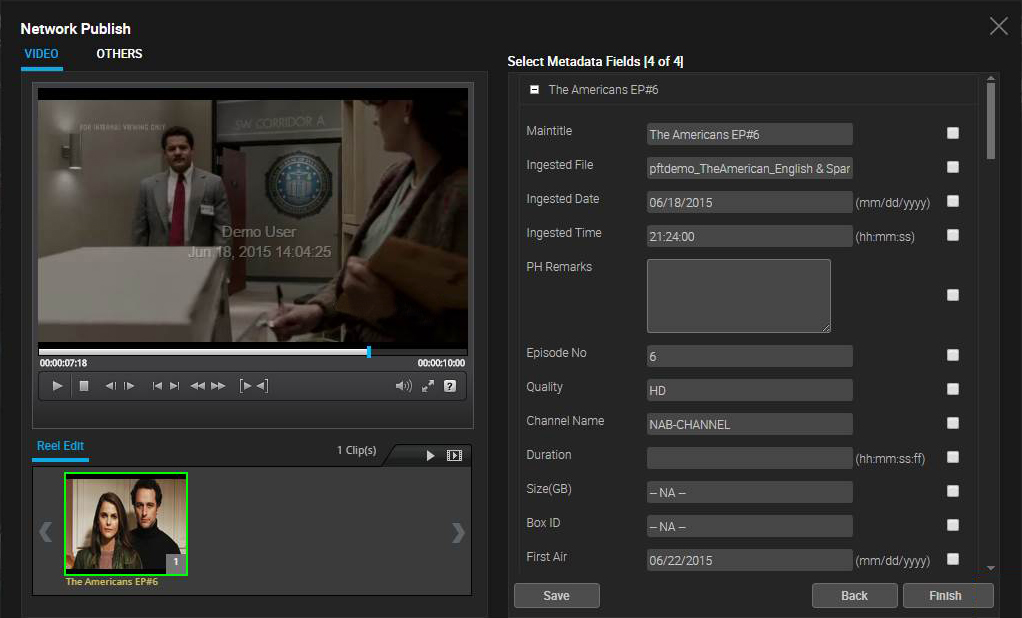
Have OTT’s completely changed the way professionals can and should approach distribution?
It goes back to a change in the way people think.
Historically, creators thought about linear television, and for movies they’ve be considering what the film was going to look like in a theater. Now they’re realizing it’s not that simple, because this content can be and many times is being seen on screens that are larger than a typical movie screen and as small as the screen on a mobile phone. That’s a reality they’ve come to realize and act accordingly.
Distribution has been hugely impacted by OTTs, and that’s a reality whether people want to accept it or not. OTT, VoD, SVoD and other digital distribution channels have also created a larger opportunity to monetize their content – more channels, more revenue. It has also given life to old franchises and catalogue titles as they can be re-purposed or up converted to HD creating all new revenue streams.
To get a bit more specific about your technology, are you still seeing hesitancy around working with and through the cloud?
In some cases, yes. That said, I’ve seen in the last year that the attitude around it is really changing. People are open to it. People are listening. People are trying to learn about it. You still have some content owners and aggregators that think if they don’t have everything on-site or on their devices then they have a security problem. Some people do have a very physical mentality when it comes to these things. The challenge is more about education as online in most cases is more secure. Having standard boards such as the MPAA, ISO 27001 and SOC 2 compliance help mitigate risk and raise confidence.
I saw this when we first got started with DAX. All of the post facilities didn’t want to upload to DAX because they thought we were inserting ourselves between them and their customers. Eventually, they moved beyond that and some wanted to create their own solution, but these days most of them would never consider setting up their own operation like that, simply because of the logistical effort it would take to create and maintain something like that.
What a lot of people realize is that ensuring they have redundancies, that they have disaster recovery, that they’re upgrading their software, that they have the right security is in place, etc. is a full time effort in and of itself. It makes them realize that an opex model is more effective than a capex model. That is to say, opex is about spending for something that impacts you today, versus capex which impacts something you’re going to do in the future. For the most part, everything we do is on an opex model, and people are changing their mindset toward it.
Of course, it’s different with each studio and network. Some of them are going for it 100%, while others are still in an exploratory stage and trying to figure out the economics. But some are certainly looking to change the way they do business, because they know it’s the only way they can do business.
There’s no one out there that’s ignoring the model completely, and the number of people taking advantage of what it has to offer is only going to increase.
What would you tell people who are struggling to change their mentality or process around how they approach distribution?
There’s always the fear of the unknown. And in some cases there’s a concern around what it means to the existing staff. These sorts of developments don’t change staff, but instead might change certain responsibilities or functions. People can get best of breed technologies and take advantage of the innovation that’s going on in the industry, which is something you have to keep in mind when it comes to these sorts of adjustments.
The best thing you can do around this type of change is ease people through the process. Give it to them in bite-sized chunks. Give people the ability to start small and go big. The “big-bang” approach where you suddenly change everything is impractical for a number of reasons. No one has that kind of appetite for risk.
Cloud and software as a service gives people the ability to try things out. It’s low cost and low risk to see if it works, and as it does or doesn’t, you can scale and grow appropriately so you can take on what you want to take on.
This model is a change, but I’ve seen a huge shift in terms of the way people are viewing this. I’m optimistic that people are looking at more effective ways to run their organization, especially their content supply chain & we do just that!

Filmtools
Filmmakers go-to destination for pre-production, production & post production equipment!
Shop Now